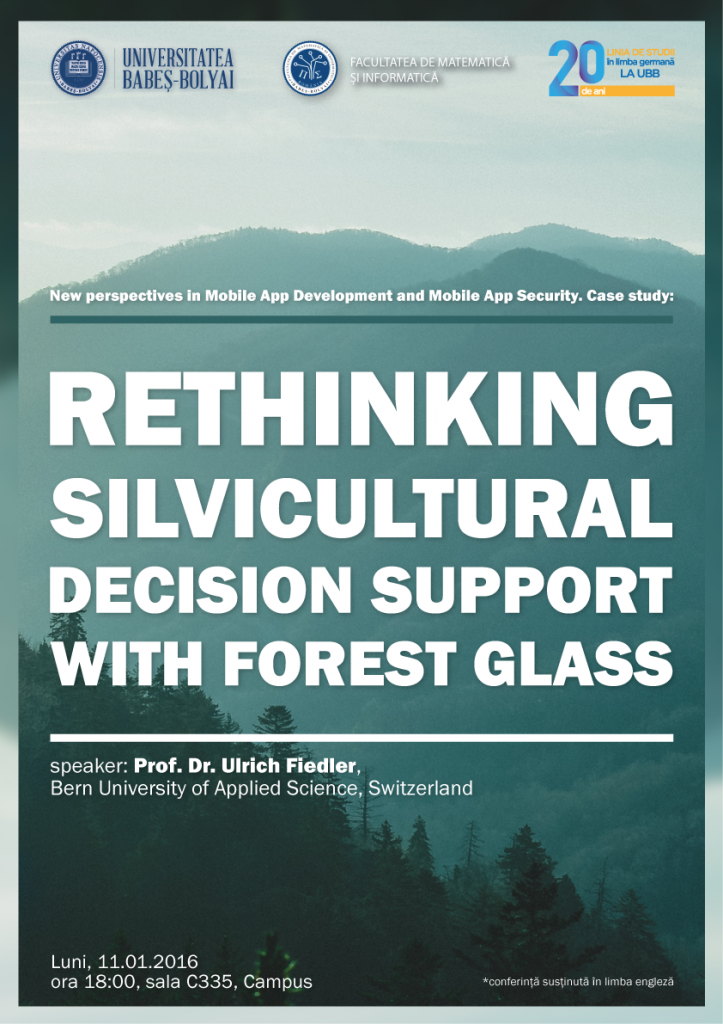
- This event has passed.
New perspectives in Mobile App Development and Mobile App Security Case study: RETHINKING SILVICULTURAL DECISION SUPPORT WITH FOREST GLASS
11-01-2016, 6:00 pm - 8:00 pm
Event Navigation

New perspectives in Mobile App Development and Mobile App Security Case study: RETHINKING SILVICULTURAL DECISION SUPPORT WITH FOREST GLASS
Speaker: Prof. Dr. Ulrich Fiedler, Bern University of Applied Science, Switzerland
Abstract:
Google Glass is a cutting-edge technology in Human Machine Interface (HMI) applications.
A relatively small, semi-transparent display is placed just in front of the eye in a way not disturbing visual perception. The display is large enough to visualize charts and maps. Interactions with this wearable device can be performed with voice commands or via touches on the sensitive arms. The user does not have to hold a device and thus has their hands free for other tasks. Sensors built-in in Glass and sensors in the smartphone to which Glass is connected to, enable determination of the location of the user and the direction they are looking to. Information tags can be superimposed to objects viewed by the user (augmented reality).
The Graphical User Interface (GUI) is organized in screens and menus providing on-site information and enabling founded decision making or actions. Several professional applications already exist in various fields including medicine or public transportation, but not in silvicultural management. Forest Glass is a project that aims at exploring the potential and limitations of Google Glass for supporting sustainable forest management and especially rethinking the way of organizing and providing decision support with this innovative HMI. A first demonstrator of Forest Glass has already been developed for testing in different use cases with practitioners in the forest. This demonstrator builds on already existing projects including MOTI (dendrometric measurement tools on smartphone), SiWaWa (growth model based on the inputs of MOTI), Sylvotheque.ch (visual documentation of the forest), and uses rich forest data provided by public administration. This talk presents and discusses the potential of Google Glass for silvicultural decision support illustrated with this first demonstrator.


